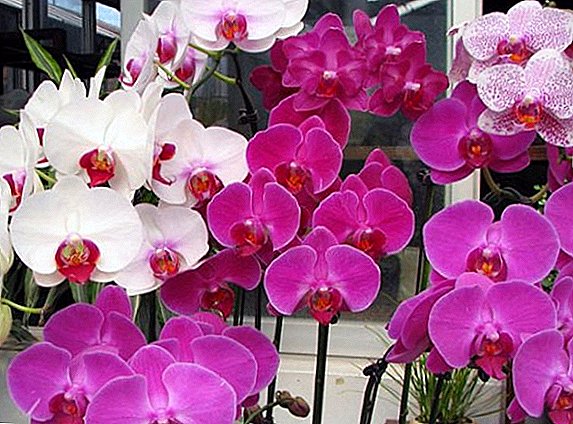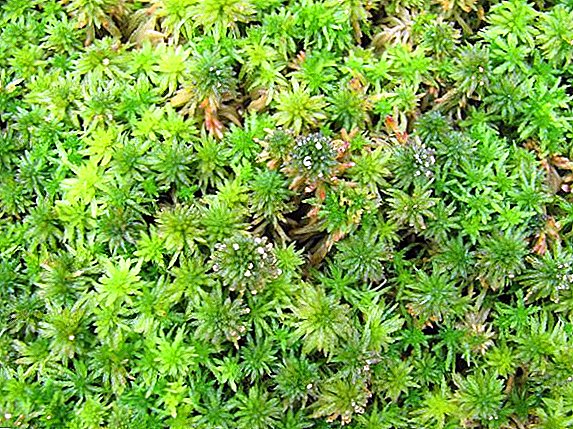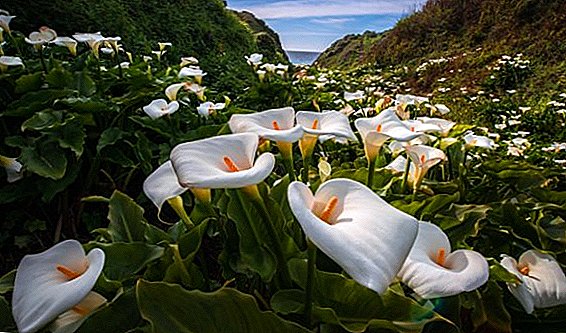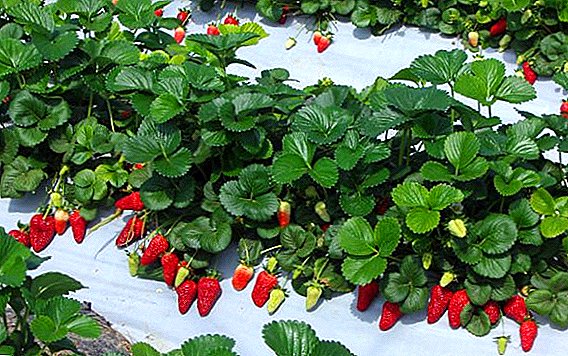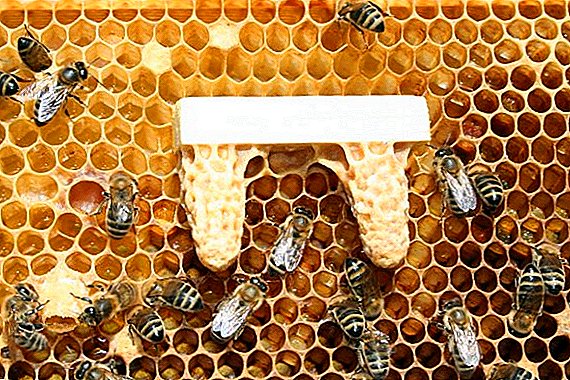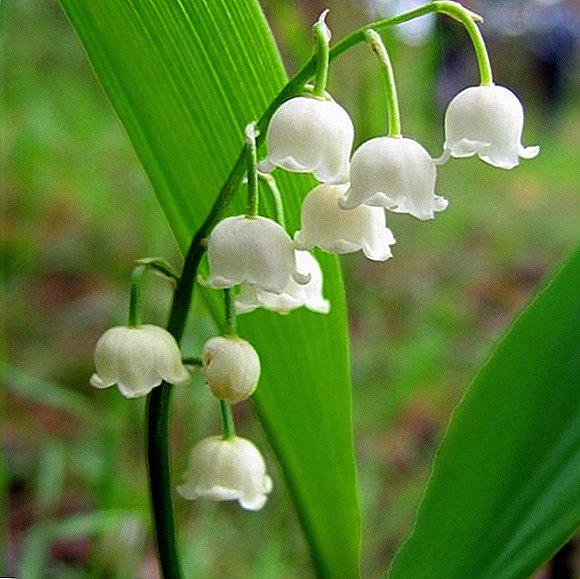 Bright May Greetings - this is how it is sung in a naive old song about how nice, instead of chic roses, tulips or lilies, to receive as a gift a “modest” bouquet of delicate and fragrant lilies of the valley. Alas, this popularity of spring forest flowers has led to a sad result: their number in the wild has declined so much that at some point the plant was even threatened with extinction.
Bright May Greetings - this is how it is sung in a naive old song about how nice, instead of chic roses, tulips or lilies, to receive as a gift a “modest” bouquet of delicate and fragrant lilies of the valley. Alas, this popularity of spring forest flowers has led to a sad result: their number in the wild has declined so much that at some point the plant was even threatened with extinction.
Botanical description
May lily of the valley, also called convalia (the Latin name is Convallária majális) is a perennial herb of small stature (15-35 cm) belonging to the Asparagus family.
Its ground part consists of two (sometimes three) very large broad bright green basal leaves of lanceolate or elongated elliptical shape with pointed tips, below which are almost imperceptible lower leaves, and from them comes a long, usually leafless, less often with threadlike leaves stem with a flower brush.
The inflorescence is laid in the summer of next year in a large bud located in the upper part of the rhizome. The number of flowers on the inflorescence varies between seven and twenty, all of which, as a rule, are turned in one direction.
Flowers are arranged on long curved pedicels ending in bracts. Perianth white or pale pink, has the shape of a rounded six-blade bell, dropped down. Flower size is small: length is from 4 to 9 mm, width - from 3 to 7 mm.
Video: description of May lily of the valley
The Asparagus family also includes such plants as yucca, host, hyacinth, agave, chlorophytum, asparagus, dracaena, and iglitza and cordilina.Inside the "bell" are six stamens. Convalia May blooms from one and a half to two weeks at the end of spring, and this justifies its name (during flowering, the plant has a very decorative appearance and has a delicate and delicate aroma, during the rest of the season, in general, does not attract attention).
Did you know? The touching flowers with gracefully down heads gave rise to many legends that somehow connected the origin of the lily with female tears that fell to the ground. Christians believe that the snow-white "droplets" symbolize the tears of the Virgin Mary mourning the Savior; Slavs believed that the plant sprouted where the sea princess was sad for Sadko, who left her for the sake of earthly love; and the Ukrainian parable associates the appearance of a flower with the tears of a nameless girl who was expecting her beloved from a military campaign. And only among the ancient Romans, the snow-white "bells" were associated with sweat drops that drained from the body of Diana, the young goddess of the hunt, when she ran away from the fauns who were pursuing her.

After flowering, a round bright red fruit with a diameter of 6 to 8 mm is formed from a rounded ovary, inside of which there are one or two seeds, which also have a rounded shape. Berry remains on the plant for a long time.
The root system of konvaliya is fibrous, consists of many small processes, spreading horizontally under the surface of the earth and ejecting the lower leaves, from which new plants are subsequently formed. In addition to this method of vegetative propagation, seed is also possible, but from seed a lily of the valley grows very long and begins to bloom no earlier than in the seventh year.
Popular name
Due to the unusual shape and delicate aroma, lilies of the valley are among the most popular flowers, long loved by the people. It is not surprising that people gave this plant a variety of affectionate nicknames that reflect not only its external characteristics, but also the beneficial properties it possesses.  Here are just some of these names that have come down to our days:
Here are just some of these names that have come down to our days:
- May lily;
- field lily;
- forest bell;
- forest language;
- dog language;
- hare salt;
- hare ears;
- May Day;
- young;
- youngster;
- washing grass;
- eye grass;
- the culprit;
- shirt;
- lordushnik;
- smoothly;
- meadow cheremka;
- crown;
- lumbago;
- silversmith;
- snow droplets;
- Mary's bells.

Did you know? It is noteworthy that the modern Latin name of the plant has been preserved from the time of the Swedish naturalist and physician Carl Linneus (1707-1778), who, in turn, modified the ancient Roman name of the flower - lily of the valley (lilium convallium). And in English, Danish, Spanish, and some other languages, the lily of the valley is today literally called the lily of the valley (Lily of the Valley, Lirio de los Valles, etc.).
No less interesting are the names that other peoples gave the plant. For example:
- Bulgarians have lily of the valley - these are "tears of a girl";
- the Czechs have a bun;
- the Germans have the "May bell";
- the Poles have the “doe's ear” (due to the leaf shape similar to the doe's ear);
- the French and Italians have “thrush” (muguet and mughetto, respectively).

Where do lilies of the valley grow
Lily of the valley is not for nothing called the lily of the valley. This plant prefers slightly shaded (but at the same time well lighted) and floodplain areas with very wet and fertile soil with a neutral level of acidity.
It is found both in coniferous and deciduous or mixed forests, oak forests, in glades, between bushes, in moss, growing into fairly large areas. Favorite "neighbors" - pines, oaks and aspens. Sometimes you can see lily of the valley on open areas, but such places are not suitable for a flower.
Geographically, the distribution area of the lily of the valley covers almost the whole of Europe and the Caucasus, in addition, the konvaliya can be found in North America, Anatolia, East Asia and China. As a matter of fact, the normal natural conditions for the plant are the Northern Hemisphere, a zone of temperate climate.  In Russia, in addition to its European part, lily of the valley grows in Eastern Siberia and the Far East, in particular, in Primorye, Priamurye and Transbaikalia, on Sakhalin and the Kuril Islands.
In Russia, in addition to its European part, lily of the valley grows in Eastern Siberia and the Far East, in particular, in Primorye, Priamurye and Transbaikalia, on Sakhalin and the Kuril Islands.
We recommend reading about how to grow lilies of the valley in the garden.
It is clear that such a vast area of distribution presupposes unequal natural conditions, therefore, adapting, the plant has undergone certain specific features over the centuries.
As a result, depending on the place of growth, four species of lily of the valley share:
- Convallaria majalis transcaucasica - a plant common in the North Caucasus, Transcaucasia and Turkey.
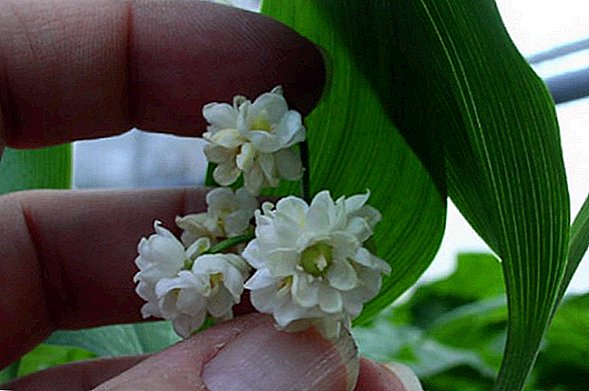
- Convallaria majalis keiskei (lily of the valley Keizke) - grows in Transbaikalia, the Far East, in Mongolia and Indochina.

- Convallaria majalis ("common" lily of the valley) - The area is Europe and the Caucasus.
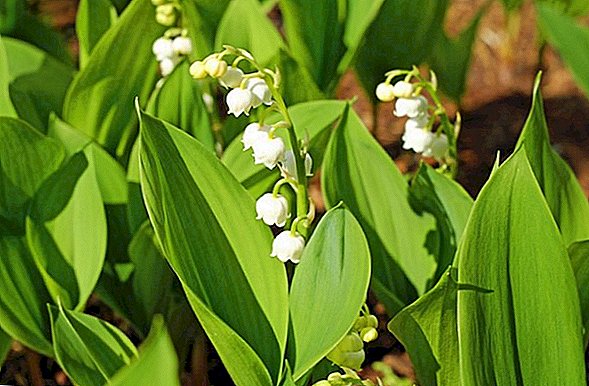
- Convallaria majalis montana (mountain lily of the valley) - American relative of "our" lily of the valley.

Important! Pink lily of the valley, which can often be found in flower bazaars as a particularly rare variety of plants, is in fact a product of marketing. In nature, pink lilies of the valley, like the "blue bird", does not exist. There is a special hybrid of convales and a tulip that looks like a lily of the valley, but has pink flowers (this plant is called tsutsumi), but under the guise of a rare plant they can also sell a wintergreen - a completely different flower that looks like a lily of the valley very remotely and, in any case, does not have neither its beneficial properties nor the characteristic aroma.
It must be said that lilies of the valley have been successfully cultivated by humans for a long time, which allowed not only to preserve the species that has reduced its population, but also to bring out a lot of new hybrids of various shades, sizes and shapes. 
Why lily of the valley is listed in the Red Book
Taking into account the favorite habitats and remarkable decorative qualities, it is not surprising that the population of lilies of the valley on the planet with the development of technical progress began to decrease sharply.
On the one hand, this is largely due to the massive deforestation and the construction of new settlements where nature has remained virgin until recently, and, on the other hand, delicate bouquets, touchingly glorified in songs and poems, are invariably popular in spring, and demand known to give rise to a sentence.
In addition, konvaliya widely used in medicine and perfumery, and it also does not contribute to an increase in its population. In a word, it is quite natural in the Red Book of the International Union for Conservation of Nature at a certain stage that the lily of the valley was included as a plant that is endangered and in need of protection.  This is not to say that this led to the cessation of the uncontrolled cutting of flowers "into bunches", they simply sold them carefully, looking around and fearing an administrative fine. Confidence in the illegality of such actions for many years rooted in the minds of people, although today these fears are already baseless.
This is not to say that this led to the cessation of the uncontrolled cutting of flowers "into bunches", they simply sold them carefully, looking around and fearing an administrative fine. Confidence in the illegality of such actions for many years rooted in the minds of people, although today these fears are already baseless.
Important! Currently, the May lily of the valley is not included in the composition of plants listed in the Red Book.
Indeed, in those years, while Convalia was under official protection, she managed to significantly restore her population. And, if you treat the wild flower with care, trying not to damage the root system when cutting, you can bring a small bunch of flowers with you from the forest, and this will not cause harm to nature.
Another thing is that it is not worthwhile to abuse it (and even more so to turn it into a business), otherwise in the near future the plant will again need to be entered into the Red Book. 
Poisonous plants
Like many other medicinal plants, convalia is poisonous. And deadly. The most dangerous substance contained in the lily of the valley is the glycoside, konvallotoksin. It is absolutely in all parts of the plant, but the highest concentrations of poison are found in fruits.
Such medicinal plants as belladonna, raven eye, yasenets, marsh wild rosemary, marsh bath, hogweed, ivy, field larkspur, berry yew, field larkspur, red elderberry, anemone buttercup, hemlock, columbida are also poisonous.
About konvallotoksinom poisoning indicate:
- nausea;
- sharp pain in the abdomen;
- darkening of the eyes;
- headache;
- lower blood pressure;
- arrhythmia;
- slow pulse;
- blurred vision;
- loss of consciousness.

Important! Just a pair of red berries, swallowed by man, can cost him his life. Severe poisoning also often occurs in domestic cats, and the animal can be poisoned, even clinging poisonous water from a vase, where there was a fragrant bunch.
In the absence of immediate and adequate assistance, poisoning with a lily of the valley can cause cardiac arrest, so the first thing that needs to be done simultaneously with a doctor's call is to immediately flush the stomach.
Application
No matter how beautiful the lily of the valley, decorative spring bunches of it are not the main use of the plant. The use of konvaliya much wider and more diverse.
In gardening and landscape design
Gardeners and gardeners are very fond of the contest, and despite the abundance of ornamental plant varieties, the common lily of the valley, growing in the wild, does not give up its positions.  Experts say that there is no need to buy a plant, it is quite possible to dig it yourself in the near forest. It is best to do this in the offseason (of course, not during the flowering period) and do not forget to use gloves to avoid poisoning.
Experts say that there is no need to buy a plant, it is quite possible to dig it yourself in the near forest. It is best to do this in the offseason (of course, not during the flowering period) and do not forget to use gloves to avoid poisoning.
Your garden will also be beautifully decorated with such herbaceous plants as Helipterum, Impera Cylindrical, Levkokorina, Veronikastrum, Canary Gum, Euphorbia cypress, Dianthus Pearl, Volovik, Bidens, Bookshop, Yasnotka, Arenaria, Penstamon and Alpine Aster.
We select a suitable bush, dig under the scapula under the root, necessarily taking a fragment of the rhizome, thin shoots and a bud, from which next year the peduncle will grow. To use seeds for breeding a flower bed is not a very good option, such plants, as already mentioned, will not bloom for long.
Lilies of the valley look great on flowerbeds (especially in combination with ephemeroids and ephemeras), near artificial ponds and along curbs.  The only problem associated with growing convalia is its reverent attitude to light and moisture. This plant does not take root in sunny areas, but if you need to decorate a secluded spot in the shade of trees or small bushes, then it is difficult to imagine anything better than this delicate flower.
The only problem associated with growing convalia is its reverent attitude to light and moisture. This plant does not take root in sunny areas, but if you need to decorate a secluded spot in the shade of trees or small bushes, then it is difficult to imagine anything better than this delicate flower.
It is necessary only to make sure in advance that the earth contains a sufficient amount of humus, for this it is necessary to put a thick layer of fallen leaves on top of the ground a year before planting and leave it to rot over the winter.
In perfumery
Many women remember the perfume "Lily of the Valley Silver" brand "New Dawn", very popular in the 80s of the last century. The basis of their flavor, as you might guess, are exquisite notes of konvaliya.
The smell of lily of the valley, subtle, delicate and chaste, very much attracts us in this flower, but what is so widely used by perfumers, in fact, has very little in common with real lily of the valleys. 
Important! May lily of the valley contains a very small amount of essential oil, and therefore it cannot be used in the manufacture of perfumes. An artificially selected composition made up of several other essential oils, in particular, rose and orange blossom, ylang-ylang, and others, has a "lily of the valley" note. For this reason, by the way, the "lily of the valley" in the products of various companies may "sound" quite differently .
Fragile, quivering and lyrical notes of this fragrance in combination with other floral lines, as a rule, are used in women's perfumery, for strong sex these smells are much less suitable.
Among the most famous aromas in which there is a lily of the valley, it is worth mentioning:
- “Diorissimo”, “Jadore” and “Poison Hypnotic” by Christian Dior;
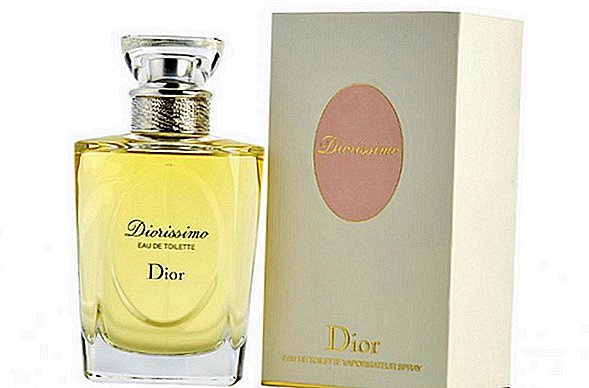
- "Fleur de Crystal" by Lalique;

- "Pleasures" by Estee Lauder;

- "Envy" by Gucci;

- "Miracle So Magic!" from Lancome;

Did you know? In the Middle Ages, konvaliya was considered the emblem of medicine, and more specifically, one of its branches was therapy. It is not for nothing that Nicolaus Copernicus, who today is known mainly as the author of the heliocentric system of the world, and his contemporaries were more appreciated as a medical practitioner, in one of the famous portraits is holding a symbolic bouquet of lilies of the valley.
- "Emporio" by Giorgio Armani;

- "Hugo Pure" by Hugo Boss;

- "Pour Femme" from Bvlgari;
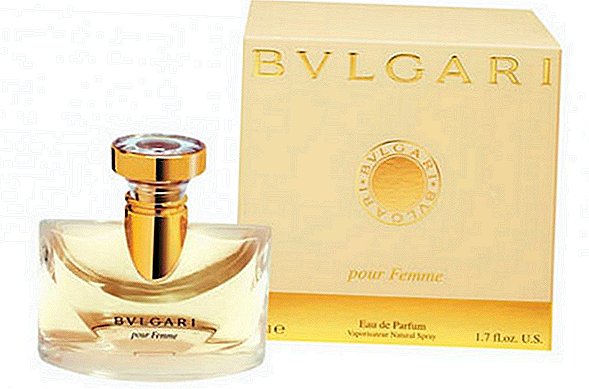
- "1881" from Cerruti;

- "One Summer" by Calvin Klein;

- "Idylle" by Guerlain et al.

In folk medicine
But, perhaps, the most important direction in the use of convalia is still medicine. And, unlike many other plants with healing properties, not only folk.
May lily of the valley is used in the pharmacological industry of thirteen states. Medicinal raw materials at the same time are all parts of the plant, including flowers, which is why it is usually collected at the time of flowering.
Preparations made from a plant are used to treat:
- diseases of the cardiovascular system (heart disease, hypertension, heart failure, tachycardia, acute circulatory failure of the second and third type);
- edema (including during pregnancy and menopause);
- endocrine disruption;
- epilepsy;
- paralysis;
- some pathologies of the gastrointestinal tract (for example, as a choleretic agent for cholecystitis or a diuretic for ascites);
- nervous disorders, headaches.
Traditional healers, in general, apply convalia in the same areas as certified doctors. In combination with valerian and hawthorn, the lily of the valley very well soothes and relieves pain.
To normalize the thyroid gland, the plant is brewed with parsley and a cocklebur. The same tool is used in cardiovascular diseases. Fresh flowers of lily of the valley, mixed with nettle leaves, are applied as compresses to the eyes with glaucoma.
For the normalization of the thyroid gland also use watercress, Zyuznik, Irgu, tributary white.
And yet, since the plant is classified as highly toxic, it is very dangerous to use it for self-treatment. May lily of the valley is a mystery plant. Gentle and quivering outside and deadly poisonous inside, this flower is enveloped in a huge number of legends and myths. 
Familiarize yourself with the beneficial and healing properties of the May Lily of the Valley.
Its aroma is present in many products of the most famous perfume brands, but the plant itself is not used for their manufacture. It is considered an endangered species, but the flower is excluded from the Red Book. In fact, there are several types of konvaliya, but officially there is only one.
Did you know? Residents of the Kuban specially planted lilies of the valley around their homes, inside and outside the perimeter of the fence, to protect the home from the evil eye.
In a word, you can talk a lot about lily of the valley, but even better - just enjoy the beauty of this exquisite May flower during a walk through the forest, without succumbing to a cruel and senseless urge to pick it and put it in a vase. Only in this way can we save the main symbol of spring for future generations!



















